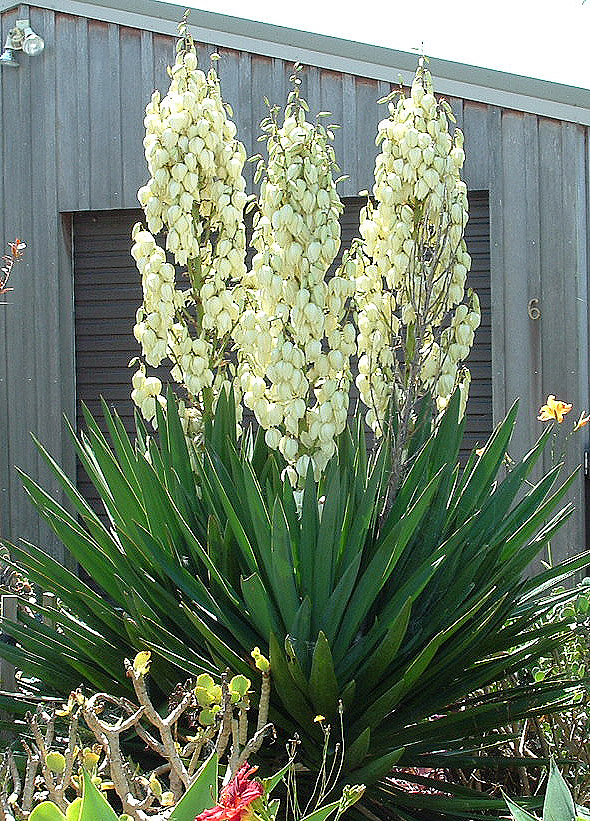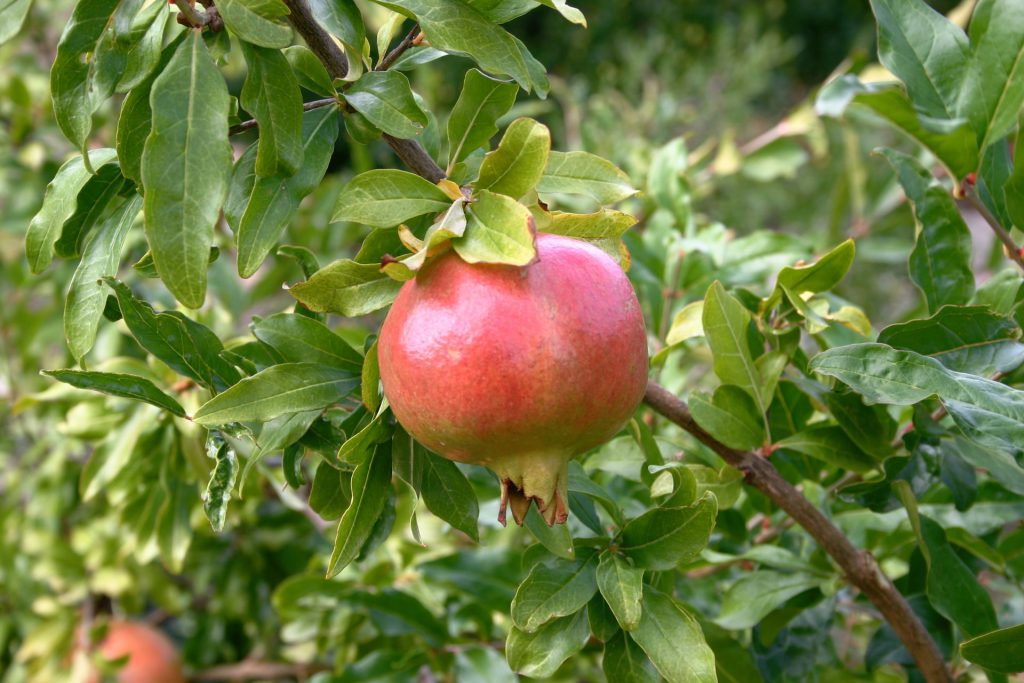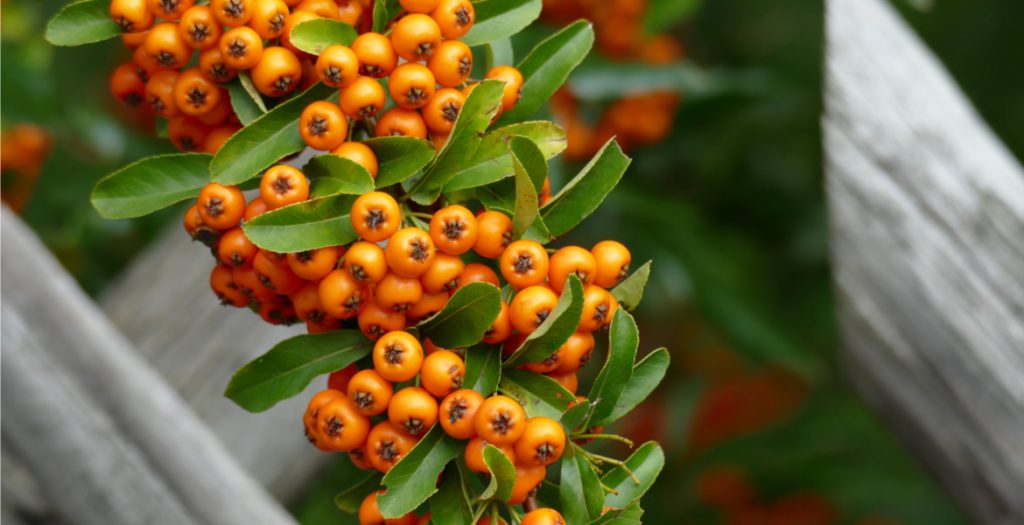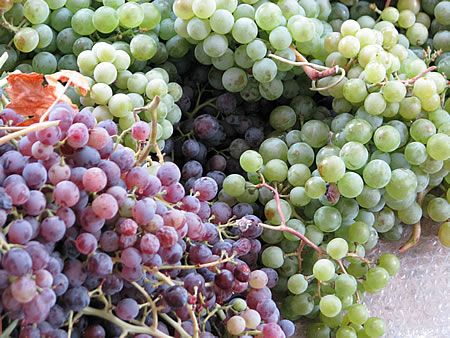Yucca is a genus of over 40 perennial plants, shrubs, and trees. A few are grown as houseplants, including Yucca gigantea (also known as Y. guatemalensis and Y. elephantipes) and the Yucca aloifolia. Yuccas are native to the American Southwest, Mexico, and the Caribbean—they are visually interesting, looking similar to agave or dragon plants. Special note: These plants are not the same as yuca or cassava plants—edible, starchy tubers common in Latin American cuisine.
Some are fast-growing plants growing up to two feet per year, while others grow slowly, about 5 inches a year. All are extremely drought tolerant. Most species of yucca will grow into room-devouring monsters, but this takes so long that you’ll get many years of use as a houseplant before it overwhelms your space. Most can grow outdoors, withstanding cold snaps down to 10 degrees Fahrenheit. Some varieties can survive subzero temperatures.
Plant them outdoors in the early spring. However, do not plant them too close to the house; these plants are not invasive species but have invasive root systems that can damage home foundations, sidewalks, and underground pipes. Beware the tips of the long, spiny leaves of yucca plants; they are sharp and pointy and can cause injury. Pet owners should take caution if adding yucca plants—all parts of the plant are toxic to dogs and cats (as well as horses).
Growing Outdoor Yucca Plants
Yucca plants are native to the Southwest U.S. They prefer dry, sandy regions like the desert and Great Plains. They have naturalized from Florida to New England to the Mississippi River and can tolerate poor, sandy, well-drained soils in full sun, efficiently handling heat, drought, and salt spray. Outdoor plants have a higher chance of blooming regularly than indoor yucca plants.
If planting yuccas outdoors, locate them away from paths and sidewalks since their leaf tips are sharp and can injure passersby. Also, their roots can disrupt sidewalks. An ideal place for this plant is in the sun, but ensure it gets a few hours of shade during the day.
If growing your yucca plants indoors but want to bring them out during the summer, slowly acclimate them to life outdoors by hardening them off several hours each day outside. Gradually introducing plants to outdoor life can reduce the chance of leaf burn or systemic shock. Yucca species that aren’t as cold hardy should return inside as the weather turns cold. Again, slowly harden off the plants so they get gradually accustomed to indoor life.
Indoor Yucca Plant Care
Under the right conditions, yucca plants are not difficult to grow. They tend to thrive on a bit of neglect rather than too much attention. They can easily get overwatered. Soggy stems signify too much water. In the right conditions, they live about five years as houseplants and up to 20 to 50 years if grown outdoors.
A bright corner with relatively low humidity is the best indoor condition for a yucca plant. Additionally, yucca plants are not prone to many pests, although scale insects can occasionally be an issue. Over time, yucca plants will typically lose their lower leaves (in nature, they droop, forming a skirt around the trunk), giving the plant a pleasant “tree-like” appearance.
Light
Yucca plants thrive in bright, indirect light indoors. Growing yucca in too little light can result in thinner and slower growth, while intense, direct sunlight can cause white spots on leaves or crispy, brown tips.
Soil
Yucca plants naturally grow in sandy terrain. Inside, plant your yucca in a loose, well-drained potting mix. Low-maintenance yuccas do not need specially formulated or rich fancy soil. Instead, get an inexpensive potting mix and blend in coarse sand and perlite to promote drainage.
Water
Yuccas are highly sensitive to overwatering. Water your plant once a week during the spring and summer growing seasons, but ensure it has excellent drainage and dries out between waterings. Come winter, decrease your watering cadence to once every few weeks (or even less). Never let a yucca plant sit in a tray of water.
Temperature and Humidity
Yucca plants are adapted to the desert, where temperatures can soar above 90 degrees Fahrenheit (32C) during the day and down to 30 degrees Fahrenheit (-1C) at night. Therefore, yuccas are relatively adaptable to most indoor temperature conditions and fluctuations. They will grow best with moderate humidity, but as desert plants, they are perfectly content in dry conditions, and there is never any need to mist this plant.
Pruning Yucca Plant
Indoors, yucca plants occasionally need to be pruned when they grow too tall for your space. However, doing so is a bit unconventional, especially if you’re used to pruning traditional landscape plants. Cut back in early spring.
To prune, remove the plant gently from its pot and use a saw or sharp pair of loppers (Long-handled Gardening Shears) to cut the trunk in half. Repot the rooted end of the trunk and water it well, continuing to care for the plant as you traditionally would. In just a few weeks, the plant should start producing new leaves, eventually appearing much as it did before, just shorter. You can also plant the top portion of the yucca to try to propagate a second plant.
Potting and Repotting Yucca Plant
Yuccas do well if they are slightly pot-bound as long as they don’t become heavy enough to tip over their containers. You won’t need to bother with repotting for at least two or three years.
Repotting larger yucca plants can be difficult, so larger plants can be refreshed with new potting soil by digging out the top 2 inches of the container and adding new soil. During a typical repotting, you can remove the yucca plant from its container and increase it by one container size, always using fresh potting soil.
Overwintering
Container-grown seedlings should be kept inside and protected from frost the first winter.
Mature plants can get winter burn on their leaves in regions with cold, windy winters. As yucca plants enter dormancy in the cold months, they will stop storing water in their leaves, protecting the plant from deep freezes. In regions with frigid winters, reduce supplemental watering in late summer. Halt watering entirely by September.
Let the stalks naturally die back. The plant will store its nutrients in its roots. Insulate and protect it from the cold winter weather by cutting the withered foliage to the ground and applying 15-20 cm of mulch over the plant in late fall before the first frost. Cover the mulch pile with plastic sheeting or burlap in the coldest zones to provide further insulation. Remove the sheeting and mulch in the spring after the chance of frost has passed.
How to Get Yucca to Bloom
Yucca plants are beloved additions because they erupt into beautiful blooms. If your yucca isn’t blooming, there are a few things you can consider tweaking. For starters, make sure you are fertilizing your yucca enough. If your soil is particularly nutrient-deficient, choose a fertilizer rich in phosphorous—bone meal could also work.
In addition to ample feedings, be careful not to overwater your yucca plant. Too much water can lead to fungal diseases, sickening the plant and discouraging blooming. Also, consider moving your plant outdoors in the early spring if possible. Most yuccas will bloom in the spring and early summer.
Ultimately, it can take several years for a yucca plant to reach maturity and begin to bloom, so if your plant is still young, have patience and confidence it will bloom.
Greek name: Γιούκα.
Sources: https://www.valentine.gr/yucca_gr.php, https://www.thespruce.com/grow-yucca-inside-1902500





